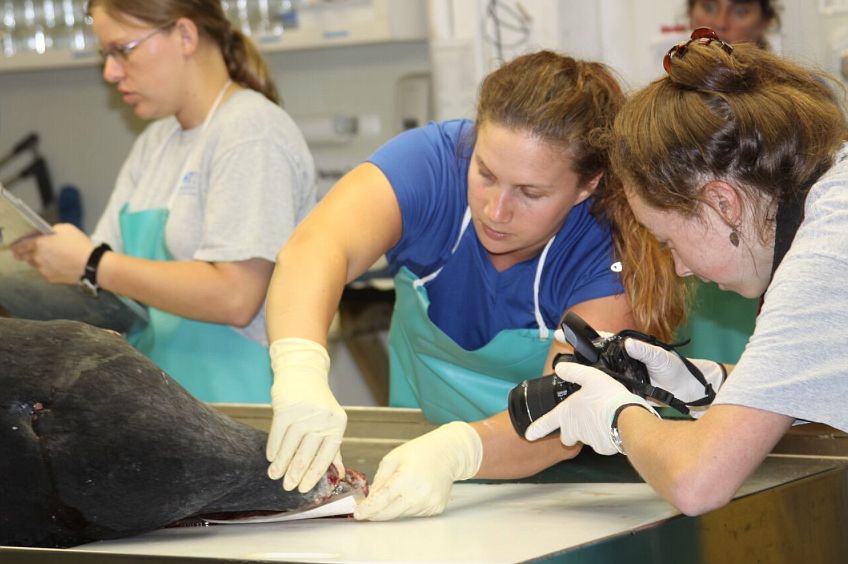- April 25, 2024
-
-
Loading

Loading

Two of Sarasota’s most well-known bottlenose dolphins, Riptorn and FB28, were found dead on Friday and Saturday.
Riptorn, 43, was recovered Oct. 16. He was known for his fin sliced and bent decades ago by a boat propeller. He was found south of City Island, and his carcass had been heavily scavenged by sharks.
Riptorn has been studied by the Sarasota Dolphin Research Program (SDRP) since 1980. He suffered from scoliosis, which left his tail stock bent. He was observed 674 times in the wild, from Venice to the Manatee River. His dorsal fin was sliced and bent by a boat propeller in August 1983.
In recent years, he was known to interact inappropriately with boaters and anglers, seeking food. In August, he was discovered with a hook and fishing line in his dorsal fin.
“I’m surprised he lived this long, given everything he faced,” said SDRP Director Dr. Randall Wells in a news release. “He’s a reminder of the ways human interactions can harm dolphins, whether we’re referring to his boat strike wounds or his entanglement in fishing gear and behavior around boats later in life.”
Riptorn had several strong male-male pair bonds throughout his life, but paternity tests show he has no offspring in the bay.
Riptorn’s cause of death is unknown as of press time, but he had signs of lung and liver issues and extensive lesions at the base of his tongue and through his esophagus.
FB28, the second-oldest male resident dolphin in the Sarasota Bay, was discovered dead Oct. 17 near the southern end of Longboat Key. Like Riptorn, his carcass was decomposed and scavenged by sharks. He was 50 years old.
FB28 was first identified in March 1971 and has since been observed more than 500 times. His territory ranged from Sarasota Bay to southern Tampa Bay, but he spent most of his life in the northern part of that range. He had close bonds with other males but outlived them all. In recent years, he was seen with the oldest male resident dolphin, F154.
FB28 fathered two calves and likely a third with Pecan Sandie, a seasonal visitor from Tampa Bay. FB28 contracted Lacaziosis, a fungal disease, which covered his dorsal fin in white, crusty patches. In later years, he was known for interacting with humans, and in 2007, he became entangled in a fishing line.
“FB28 was an important contributor to our understanding of coastal bottlenose dolphins’ lives, as he was one of the first dolphins to show us that these animals are resident to specific ranges they maintain over decades,” Wells said. “We want to share his story to remind people of the challenges these animals face in the course of their everyday lives, both from human and natural sources.”
FB28’s cause of death is not yet known.